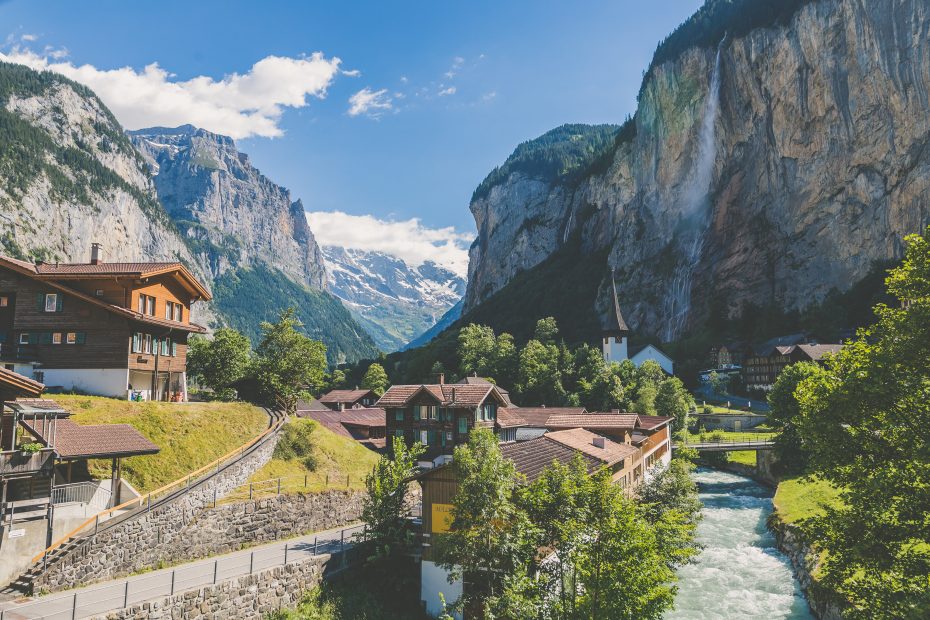Table of Contents
Introduction
Switzerland is renowned worldwide for its chocolate, luxury watches, and stunning mountain scenery. But few people realize the country also has a rich and varied cultural heritage beyond these stereotypical exports. From folk arts to avant-garde architecture, Switzerland has centuries of creative achievements that remain relatively undiscovered by outsiders. By looking past the chocolate and timepieces, it’s possible to unveil Switzerland’s diverse cultural gems.
Geography and Language
Switzerland’s unique geography and linguistic diversity have shaped its culture over the centuries. Located entirely within the Alps, Switzerland is dominated by majestic peaks, glaciers, lakes, and valleys. This dramatic landscape has inspired Swiss writers, artists, and musicians while also fostering strong local and regional identities centered around rural and alpine traditions. Switzerland has four national languages – German, French, Italian, and Romansh – which correspond to different geographic regions. This multilingual environment has promoted cultural diversity and exchange.
Architecture
Traditional Swiss architecture reflects the Alpine landscape with chalets featuring sloped roofs, wood balconies, and flower boxes. Quaint villages like Gimmelwald and Mürren showcase this vernacular style. In cities like Bern, Gothic fountains and sandstone facades adorn the medieval Old Town, a UNESCO site. Basel is renowned for its modern architecture like the Tinguely Fountain. Cutting-edge designs by Swiss architects like Mario Botta and Peter Zumthor can be seen across the country.
Literature
Switzerland has produced influential French-language writers like Jean-Jacques Rousseau and Germaine de Staël. Nineteenth century authors Gottfried Keller and Henri-Frédéric Amiel captured the Swiss spirit. Twentieth century works like Max Frisch’s I’m Not Stiller explored Swiss identity. Contemporary novelists include Peter Stamm, an expert chronicler of middle-class Swiss life. The avant-garde Dada arts movement also originated in Switzerland.
Visual Arts
The Swiss Alps’ majesty is captured in paintings by Ferdinand Hodler, a pioneer of Expressionism. Alberto Giacometti gained fame for his haunting spindly sculptures. Le Corbusier revolutionized modern architecture and urban planning. Today Switzerland is renowned for cutting-edge graphic design and public art installations like the Zürich Bahnhofstrasse. Photographers like René Burri have documented Swiss life and landscapes.
Music
Traditional Swiss music includes yodeling and playing the accordion-like Schwyzerörgeli and long Alpine horn. Western classical composers Ernest Bloch and Arthur Honegger drew inspiration from their Swiss roots. The electronic pop group Yello gained international fame. Contemporary indie rock bands like The Young Gods meld global influences with Swiss precision. Music festivals like Montreux Jazz keep the scene vibrant.
Theater and Dance
Zurich was the birthplace of the anti-establishment Dada art movement. Avant-garde theater continues to thrive, especially at the annual Zürcher Theater Spektakel. Folk dances like the Schuhplattler, with stomping and clapping, have endured for centuries. Professional dance is displayed by companies like the Basel Ballet.
Food
Swiss cheeses like Emmental and Gruyère are world-famous. Chocolate making is a refined art, led by brands like Lindt. Rustic specialties like rösti (hash browns), fondue, and raclette come from humble rural beginnings. Swiss wines from Valais and other Alpine regions are excellent but underrated. The French-influenced cuisine of French-speaking cantons differs from heartier Germanic fare.
Festivals
Swiss cities host raucous carnival festivals featuring parades, costumes, music, and dancing. Basel’s Fasnacht is the biggest. Music festivals include the esteemed Montreux Jazz Festival and hip Lucerne Festival. Smaller-scale folk festivals celebrating wine, cheese, and crafts abound. These events strengthen cultural identity and community.
UNESCO Sites
The majestic Jungfraujoch railway, Old Town of Bern, Lavaux’s terraced vineyards, the abbey of St. Gallen – these Swiss places demonstrate why the country has the most UNESCO World Heritage Sites per capita globally. They showcase both natural beauty and human creativity.
Museums
Switzerland has over 1,000 museums covering history, culture, science, technology, and more. The Kunsthaus Zürich houses an impressive fine art collection. The Verkehrshaus in Lucerne examines Swiss transport history. There are countless small museums like the Ballenberg Open Air Museum displaying traditional architecture and crafts.
Handicrafts
Watchmaking requires tremendous Swiss precision and craftsmanship, centered in cities like Bienne. Intricate embroidery and lacework, especially from Appenzell, exhibits artisanal skill. Alpine woodcarving ranges from toys to decorative friezes. These time-honored handicrafts reveal the country’s aesthetic sophistication.
Conclusion
Beyond the stereotypes of clocks and cocoa, Switzerland has made diverse and substantial cultural contributions. From sophisticated cities to remote Alpine villages, Switzerland’s multilingual communities have nurtured the arts for centuries. Its geographical and linguistic diversity have yielded a cultural mosaic as intricate as a Swiss watch. Food, festivals, museums, architecture – all these gems comprise the rich cultural heritage of this alpine nation.
5 FAQs
Q: What are some examples of traditional Swiss architecture?
A: Traditional Swiss architecture includes features like chalets with sloped roofs, wood balconies, and flower boxes. Quaint Alpine villages showcase this style, which reflects Switzerland’s mountain landscape.
Q: Who are some famous Swiss writers and artists?
A: Influential Swiss writers include Jean-Jacques Rousseau, Gottfried Keller, Max Frisch, and contemporary novelist Peter Stamm. Famous artists include the Expressionist painter Ferdinand Hodler and Alberto Giacometti, renowned for his slender sculptures.
Q: What types of music is Switzerland known for?
A: Switzerland is known for yodeling, Alpenhorn music, classical composers like Arthur Honegger, and electronic pop bands like Yello. Lucerne and Montreux host major music festivals.
Q: How do Switzerland’s geography and languages contribute to its culture?
A: Switzerland’s dramatic Alpine geography and linguistic diversity (German, French, Italian, Romansh) have fostered strong regional identities and multicultural exchange reflected in its arts and traditions.
Q: Why does Switzerland have so many museums and UNESCO sites?
A: Switzerland’s numerous museums and 12 UNESCO sites attest to its cultural richness stemming from both natural beauty and the country’s long artistic traditions, especially in crafts like watchmaking and embroidery.
